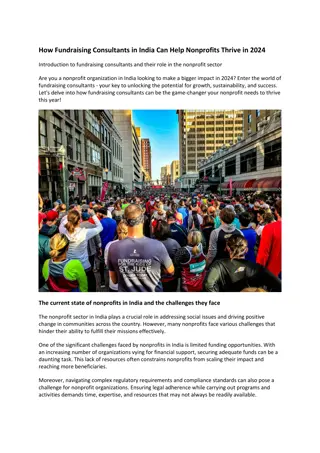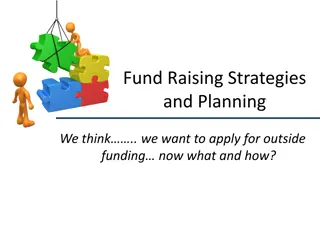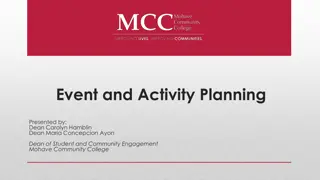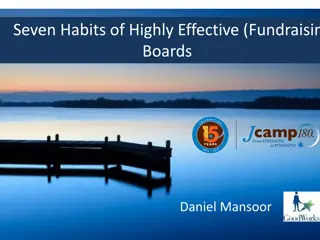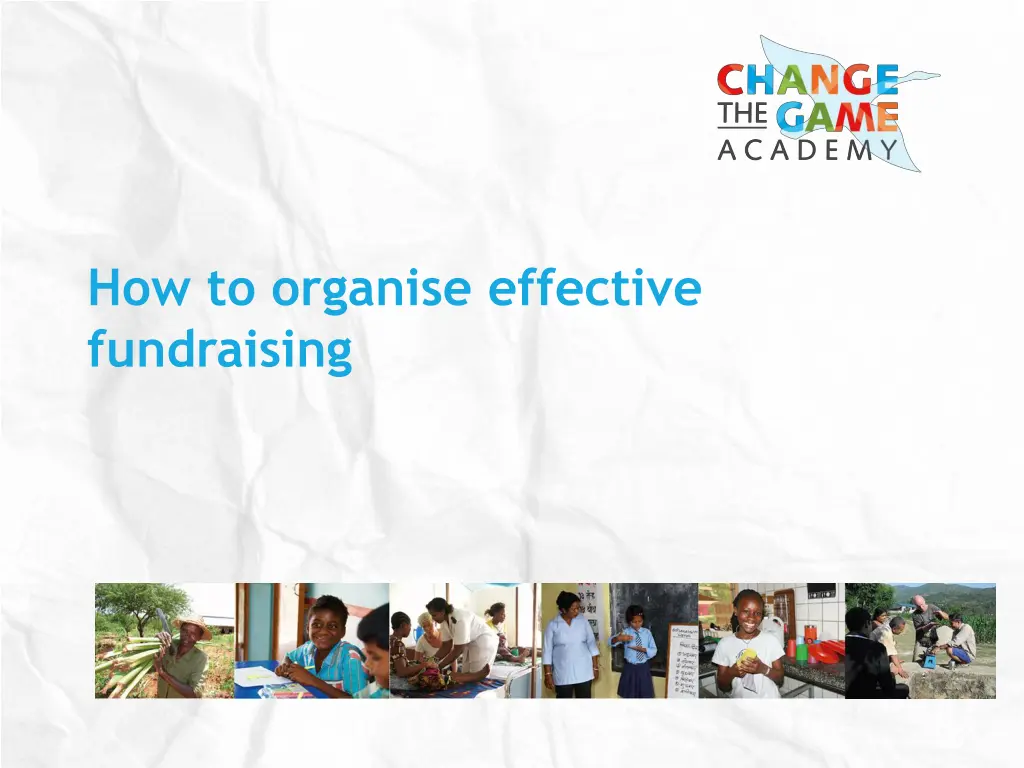
Effective Fundraising Strategies: Team Building and Resource Utilization
Learn how to organize effective fundraising by building a dedicated team within your organization, identifying key individuals for presentations, dividing responsibilities, assessing external resource needs, involving volunteers, and creating a detailed fundraising plan to achieve success.
Download Presentation

Please find below an Image/Link to download the presentation.
The content on the website is provided AS IS for your information and personal use only. It may not be sold, licensed, or shared on other websites without obtaining consent from the author. If you encounter any issues during the download, it is possible that the publisher has removed the file from their server.
You are allowed to download the files provided on this website for personal or commercial use, subject to the condition that they are used lawfully. All files are the property of their respective owners.
The content on the website is provided AS IS for your information and personal use only. It may not be sold, licensed, or shared on other websites without obtaining consent from the author.
E N D
Presentation Transcript
How to organise effective fundraising
Build a fundraising team Fundraising is teamwork! First of all one needs a member of staff who is put in charge of fundraising. It is best to set-up a team within the organisation that will work together on fundraising. Try to involve people from different parts of the organisation: program, finance and communication. Ensure that a board member or the director of the organisation is involved in guiding and supporting the fundraising team.
Identify the right people within the organisation for doing presentations Fundraising requires an outgoing and enthusiastic attitude. Identify people in your organisation who enjoy talking about it and the cause it supports.
Divide responsibilities among the team members Make sure to make clear what the responsibilities of each person involved are and what is expected from them.
Identify if resources / expertise from outside are needed If support from outside is needed for specific parts of the work, for example the design of a website or a logo, or for doing public relations, it is important to analyse what kind of expertise and knowledge is lacking within the team. And to look for suitable sources of support from outside, preferably free of charge.
Involve volunteers Volunteers can be an excellent additional resource to help execute fundraising plans. It is a challenge, however, to find and select the right people. One needs to know what one is looking for in terms of skills and knowledge and to make clear arrangements in terms of what is being expected from the volunteers.
Make a plan Small or big, always make a plan! It helps direct and prioritise fundraising efforts. It also helps to establish clear objectives, what is needed and how one is going to do it. Make sure that the top of the organisation gives approval to the plan.
Monitor and evaluate Monitoring and evaluating fundraising efforts is crucial in order to: See whether the objectives have been reached Identify the factors that contributed to success and those that contributed to failure Learn from what went well and what can be improved for the future Share the successes with the whole organization Define possibilities for further free publicity, e.g. a newspaper article







